Category: SS Lesson – Old Testament
-
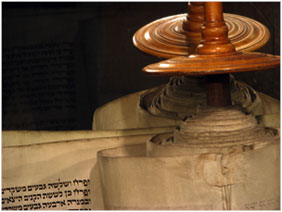
Sunday School Lesson 45: Daniel 1, 3, and 6; Esther 3-5, 7-8
Let me begin, once again, with a reminder that these are not intended for notes to help teachers, though they may also serve that purpose. I write them for people who want to study the lesson materials more thoroughly. So you’ll find explanatory notes and study questions (fewer for this lesson than for most), but…
-
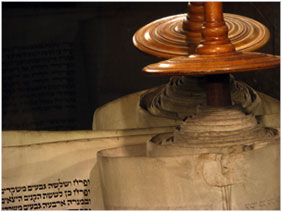
Sunday School Lesson 44: Ezekiel 43-44, 47
Ezekiel’s book goes back and forth between telling of the literal return from Babylon to Jerusalem in ways that we can also read to refer to the last days to speaking directly of the last days. (But when he thinks of the last days, is he thinking of the same event or events that we…
-
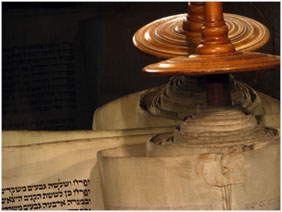
Lesson 43: Ezekiel 18, 34, and 37
Chronologically we turn backwards at this point. Jeremiah was the prophet in 597 B.C. when Jerusalem was finally captured and destroyed by Nebuchadnezzar and its people were carried into Babylon. Like Lehi, Ezekiel was a contemporary of Jeremiah, but Ezekiel did not prophesy with them. Instead, like Daniel, Ezekiel was with the large group from…
-
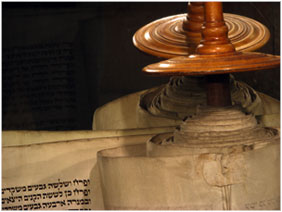
Sunday School Lesson 42: Jeremiah 16, 23, 29, 31
As you read Jeremiah, you should do what the lesson materials for Isaiah suggested: ask how those to whom Jeremiah was speaking would have understood his prophecies, how those in the Book of Mormon (who had a record of part of his prophecies with them) would have understood them, how the members of the Church…
-

Sunday School Lesson 41: Jeremiah 1-2, 15, 20, 26, 36-38
Historical Background Like Isaiah, the book of Jeremiah is a collection of prophecies edited into a book after the fact rather than one, extended prophecy. It describes itself as a history rather than as a prophecy, though obviously it contains a number of prophecies. But the word history doesn’t mean the same for ancient Israel…
-

Sunday School Lesson 40: Isaiah 54-56, 63-65
As was true of the preceding several chapters, such as chapters 52-53, it is easier in these chapters for us to see their symbolic meaning than it is to see it in many of the early chapters in Isaiah. Nevertheless, I think it helps, even in a case like this, to begin by understanding the…
-

Sunday School Lesson 39: Isaiah 50-53
These chapters are among the most beautiful in the Bible; they are an important part of Western literary culture, even for non-believers. Many scholars see the chapters as part of larger dramatic structure, a larger dramatic script as it were. In contemporary scripts the various parts would be marked clearly: “Chorus,” “Yahweh,” “Earth,” “Heavens,” “Armies,”…
-
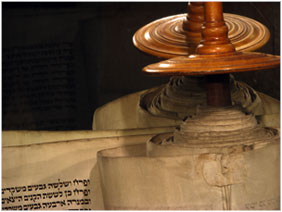
Sunday School Lesson 38: Isaiah 40-49
These chapters begin a new section of Isaiah. The first 39 chapters focused on Judah and Israel before the exile in Babylon: the sin and iniquity of Judah and Israel. This section, chapters 40-56, focuses on Judah and Israel during the exile: the promise of return. And the last chapters, 57-66, will focus on Judah…
-

Sunday School Lesson 37: Isaiah 22, 23, 24-26, 27, 28-30
Chapters 23 and 27 are not assigned for the lesson. Nevertheless, I have included them because I will refer to them. This week, rather than giving a list of questions to answer, I will suggest some exercises in reading that seem to me to be particularly appropriate to reading Isaiah, exercises in understanding in terms…
-

Sunday School Lesson 36: Isaiah 1-6
Scriptural Background The Savior tells us, “great are the words of Isaiah” (3 Nephi 23:1), and he commands us to search them diligently. (Towards the end of Book of Mormon history, Mormon repeats that command: Mormon 8:23.) Nephi tells us that his soul delights in Isaiah (2 Nephi 11:2), but he also tells us that…
-

Sunday School Lesson 35: Amos 3, 7-9; Joel 2-3
Note to newcomers: These are not lesson notes. They are notes–and questions–to help people study the lesson material. Of course, as such they may also be helpful for preparing lessons, but that isn’t their primary purpose. Amos Though Amos is a short book, it can be difficult to make sense of it. Amos seems to…
-
Sunday School Lesson 34: Hosea 1-3; 11; 13-14
The book of Hosea is an excellent example of a book that we often find difficult because we don’t understand “the manner of prophesying among the Jews” (2 Nephi 25.1). One of the most important of those ways of prophesying was the use of types and shadows. (See Romans 5:14; Colossians 2:17; Hebrews 8:5, 9:9…
-

Sunday School Lesson 33: Jonah 1-4: Micah 2, 4-7
This is another long set of study notes. I have adapted parts of them from a set of notes that Arthur Bassett made several years ago—but don’t hold Art responsible for any mistakes you see here. They are probably mine. I will provide study notes for both sets of readings, that from Jonah and that…
-

Sunday School Lesson 32: Job
Word Biblical Commentary quotes this very nice poem from W. H. Auden, “Thomas Epilogises”: Where Job squats awkwardly upon his ashpit, Alone on his denuded battlefield, Scraping himself with blunted Occam Razors He sharpened once to shave the Absolute . . . Eliphaz, Zophar, Bildad rise together, Begin to creak a wooden sarabande; “Glory…
-

Sunday School Lesson 31: Proverbs and Ecclesiastes
I laughed when I saw what this lesson covers, “only” slightly less than 16,000 words in Proverbs and slightly more than 23,000 words in Ecclesiastes. If we have the full 40 minutes, that means we should try to cover the content of about 1,000 words per minute (assuming that we don’t have opening or closing…
-
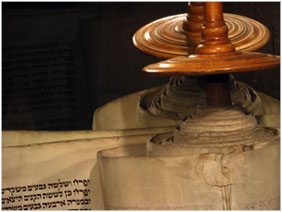
Sunday School Lesson 30: 2 Chronicles 29-30; 32; 34
As the Old Testament tells the history, Hezekiah was the 13th king after David and the 11th king of Judah: David, then Solomon, then Rehoboam (who was king at the time of the split between Judah and Israel, and became the first king of Judah), then Abijah, then Asa, then Jehoshaphat, Joram, Ahaziah, Joash, Amaziah,…
-

Sunday School Lesson 29: 2 Kngs 2, 5-6
A reminder: these are not notes for preparing a Sunday School lesson—though they may help a person do that. They are notes for studying the chapters assigned for reading. Arthur Bassett has pointed out these parallels between Elisha, on the one hand, and Moses and Christ, on the other. (All scripture references are to 2…
-

Sunday School Lesson 28:1 Kings 17-19
Elijah We know from passages in the New Testament and, especially, from Latter-day revelation, that Elijah is one of the most important prophets to have lived. (In the Jewish tradition, he is second only to Moses.) Yet we know almost nothing about him. Why do you think that is? In addition to the story of…
-

Sunday School Lesson 27: 1 Kings 12-14; 2 Chronicles 17, 20
The material of this lesson, especially that of chapters 12-13, is important to understanding the rest of Old Testament, for the eighty years that it covers details the split that occurred between the ten tribes of Israel in the north and the tribe of Judah/Benjamin in the south. Since these accounts, like the rest of…
-
Sunday School Lesson 26: 1 Kings 3; 5-11
The Story This week’s lesson focuses on the construction of the first temple. Previously there had been many places for offering sacrifices and several buildings that we would call temples. But this is the first one built on the site traditionally associated with Abraham’s sacrifice of Isaac. As this temple came to prominence, it overshadowed…
-

Sunday School Lesson 25: Psalms
I’m going to skip my usual whine about how much material is covered in the reading for this lesson (unless announcing that I won’t whine counts as a whine). Overview One traditional division of the book of Psalms—often called “the psalter”—divides it into five sections, on analogy with the five books of Moses: Psalms 1-41,…
-

Sunday School Lesson 24: 2 Samuel 11-12; Psalm 51
2 Samuel 11 Verse 1: What do you make of the fact that the story is set at the time of the year when “kings go forth to battle,” but David sent his army to battle and stayed behind himself? What is the writer telling us about David when he says “But David tarried still…
-

Old Testament Lesson 23 Study Notes: 1 Samuel 18-20, 23-24
I apologize for the rough status of these study notes. They are not yet finished, but they are as good as they are going to get this week. As you read these chapters, ask yourself why they are included in scripture. Do they testify of Christ? If so, how? Do they serve some other purpose?…
-
Though the lesson doesn’t include chapters 12 and 14, the manual recommends them as supplemental reading and I agree. We need to read them to see the full story. There is quite a bit in this section, from the choice of Saul as King, to his usurpation of Samuel’s authority and consequent loss of authority,…
-
Old Testament Lesson 21 Study Notes: 1 Samuel 2-3; 8
One can reasonably argue that the book of Judges shows us the decline of Israel to a situation in which they have to have a king to lead them, and that the treatment of women that we see in Judges is a sign of that decline. One can also argue that Ruth is a response…
-

The story of Ruth occurs “in the days when the judges ruled” (Ruth 1:1). It is not, strictly speaking, in chronological order. Indeed, from here on out, you may wish to consult the Old Testament chronology in the Bible Dictionary if you wish to see the historical connectedness of the various stories. What do Naomi,…
-

OT Lesson 19 Study Notes: Judges 2; 4; 6-7; 13-16
The notes this time are shorter than usual, for which you may well be grateful. I’ve had much more difficulty thinking of verse-by-verse study questions for these chapters. Judges The translation “judge” is misleading, for it suggests that the person it describes had judgment as his or her primary duty. However, the judges of Israel…
-

OT Lesson 17 Study Notes: Deuteronomy 6; 8; 11; 32:1-4, 15-18, 30-40, 45-47
Background Feel free to skip this background discussion if you aren’t interested in it. You can skip to the study questions without losing anything. Before taking up two points, however, let me say that I am not generally in favor of bringing much scholarly discussion into Sunday School lessons or our study for them, I…
-

OT Lesson 16 Study Notes: Numbers 22-24, 31
Who is Balaam? All of a sudden a non-Israelite prophet appears. Who is he? Based on Numbers 23:7, Word Biblical Commentary: Numbers, page 263) suggests that he is a Syrian. Is he really a prophet? If no, why not? If yes, in what sense of the word? (Archaeologists have discovered an inscription mentioning Balaam in…
-

OT Lesson 15 Study Notes: Numbers 11-14, 21:1-9
Besides the chapters of Numbers assigned for this lesson, I also recommend chapters 16, 17, and 20. It is unfortunate that we have no lessons from Leviticus. Though it is not immediately obvious how we should understand those scriptures and apply them to ourselves, the exercise of doing so can be very beneficial. I have…
